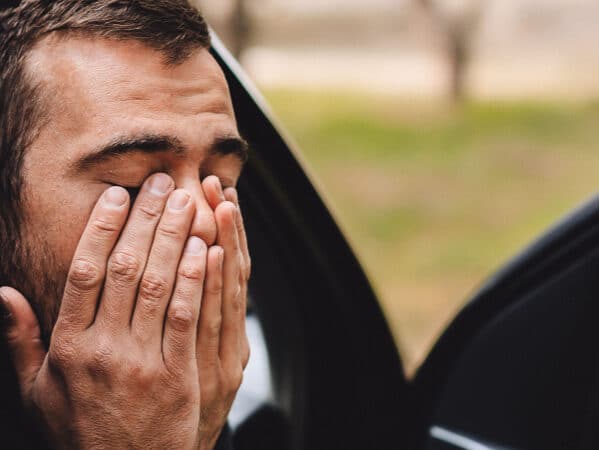Known generically as diazepam, Valium is in the benzodiazepine class of drugs. It is a long-acting medication with a half-life of 48 hours.
Various factors influence the precise timeline for how long Valium stays in your system. Certain physiological factors, how much of the drug is used, and the duration of use all play a role.
Valium Half-Life
A drug’s half-life is an important factor in determining how long a drug will stay in your system. A drug’s half-life refers to the length of time it takes for the active substance to reduce by half in the body.
This length of time is determined by bodily processes, such as metabolism. Half-lives vary quite a bit depending on the type of drug.
For Valium (diazepam), the half-life is around 48 hours. As Valium is processed by the body, the substance is then broken down into metabolites.
Quick Facts Regarding Valium’s Half-Life
Valium’s half-life is 48 hours, on average.
Valium is detectable on a urine test for 1 to 7 days after last use.
It is detectable on a saliva drug test for 2 to 3 hours.
Valium can be detected on a blood test for 24 to 48 hours.
Its use can show up on a hair follicle test for up to 90 days.
How Long Can Valium Use Be Detected?
Another determining factor in how long Valium and other benzodiazepine medications stay in your system is the method of test being used to detect the drug in the first place. Not all testing methods are created equal. Some tests can detect use in only the short term, whereas others can detect use from longer periods.
Urine drug tests are the most commonly used, and they are generally testing for benzodiazepines in general versus Valium specifically. They can detect benzodiazepine use for one to seven days after use.
Salvia drug tests can detect use for two to three hours after use, while blood tests can detect use in the past 24 to 48 hours. Hair follicle tests have the longest detection windows, being able to detect use for up to 90 days.
Factors That Affect Valium’s Duration in the Body
Again, Valium’s half-life has a strong effect on how long it stays in the body. Other factors that affect how long Valium stays in the body are physiological or biological factors, such as body size, as well as genetics and the average dosage and duration of use. Larger doses taken more frequently will be detectable for a longer period of time.
Factors that affect the rate at which medications like Valium and other benzodiazepines break down in the body include the following:
Certain health conditions like liver problems can affect the rate at which Valium is metabolized by the body.
How Does Valium Affect the Body?
Valium is prescribed to relieve anxiety and sleep disorders because it diminishes hyperactivity in the brain to reduce stress and anxiety.
The drug has an effect on nerves and brain receptors that control movement and emotions, influencing how people react to various stimuli. As a result, taking Valium can sometimes result in physical conditions like tremors.
Although Valium is effective when taken as prescribed, psychological and physical dependence can both occur, even after only short-term use. Like all benzodiazepines, Valium misuse can quickly lead to addiction.
Valium abuse can cause these effects:
Fatigue or lethargy
Memory problems
Depression
Dizziness
Sleep disorders (insomnia)
Anxiety
Night sweats and night terrors
Engaging in drug-seeking behavior
Seizures
Nausea and vomiting
Memory loss
Seizures
Valium in the Body
Since Valium is a long-acting benzodiazepine, it remains in the body’s system longer than other short-acting benzodiazepine drugs like Xanax (alprazolam) and Ativan (lorazepam).
Below is a chart that illustrates how long Valium is detectable in the body via various testing methods.
| Testing Method | Detectability Window |
|---|---|
| Saliva drug test | 2–3 hours |
| Urine drug test | 1–7 days |
| Blood drug test | 24–48 hours |
| Hair drug test | Up to 90 days |
If you have been using Valium for an extended period, do not stop taking it suddenly, as this can trigger dangerous withdrawal symptoms. Talk to your prescribing doctor about a supervised taper.
If you have been misusing Valium, talk to an addiction treatment professional about the safest way to stop abusing the medication. This will include medical detox and comprehensive therapy.


Valium Addiction
Quick Facts Regarding Valium
Valium is most often prescribed to treat the following conditions:
Anxiety
Restless leg syndrome
Sleep disorders (especially insomnia)
Seizures
Muscle spasms
Alcohol withdrawals
Sedation during surgeries and medical procedures
Diazepam was first synthesized in 1959 and entered the market in 1963, becoming the top-selling pharmaceutical in the United States (1968 to 1982). It hit the peak of its sales in 1978 with 2.3 billion tablets sold.
Valium is actually quite a notable drug with over 60 years on the market, which means that the medical industry has plenty of data to draw from, showing that Valium is indeed effective for medical use. Valium is among the most influential and salient psychotropic compounds to ever come out of the pharmaceutical industry. It has a valuable use in medicine, but it can be easily abused, often leading to addiction.
How Long Does Valium Stay in Your System when Breastfeeding?
Generally speaking, you don’t have to time your Valium dosage based on your breastfeeding schedule. Valium does get into your breastmilk but the amount is low. If you just take a single dose like using it for an occasional need or for a procedure then you can wait six to eight hours to breastfeed if you want to be especially cautious. Yet, that’s not necessary unless your baby is a newborn or a preemie.
With ongoing use, Valium does build up slightly in your baby if you’re breastfeeding but the risks are low. Doctors typically just advise that you watch for low weight gain and excess sleepiness in your baby.
Struggling with Valium use? Boca Recovery Center provides compassionate care and personalized support to help you overcome dependence and find lasting recovery.
- Relevance of Half-Life in Drug Design. (November 2017). Journal of Medicinal Chemistry.
- Pharmacological Treatment of Anxiety Disorders: The Role of the HPA Axis. (May 2020). Frontiers in Psychiatry.
- Hair Drug Testing Results and Self-Reported Drug Use Among Primary Care Patients With Moderate-Risk Illicit Drug Use. (May 2014). Drug and Alcohol Dependence.
- Classics in Chemical Neuroscience: Diazepam (Valium). (April 2014). ACS Chemical Neuroscience.
- Competitive Interactions Between Propofol and Diazepam: Studies in GABAA Receptors and Zebrafish. (September 2022). Journal of Pharmacology and Experimental Therapeutics
- Anxiety in Duckweed–Metabolism and Effect of Diazepam on Lemna Minor. (April 2022). Water.
- Demystifying Benzodiazepine Urine Drug Screen Results. (March 2019). Practical Pain Management.
- Detection Times of Diazepam, Clonazepam, and Alprazolam in Oral Fluid Collected From Patients Admitted to Detoxification, After High and Repeated Drug Intake. (August 2015). Therapeutic Drug Monitoring.
- Diazepam (January 2024). National Library of Medicine.
- Breastfeeding & Psychiatric Medications (February 2008). MGH Center for Women's Mental Health











